18 orangery ideas for an extension bursting with a luxe feel and lots of light
Whether you're deliberating over size, colour or use we've curated a selection of 18 orangery ideas to inspire your next home extension plans
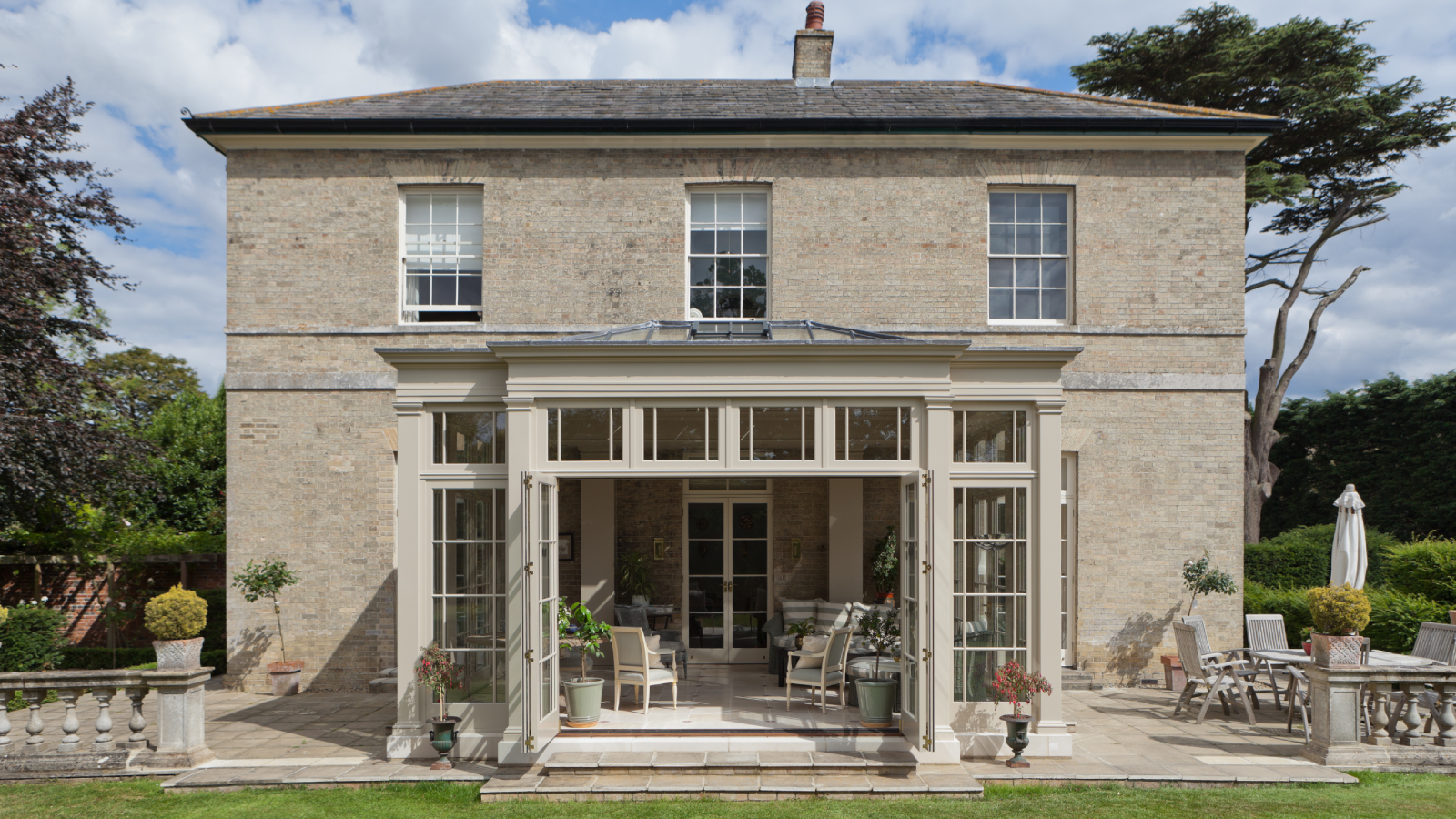
If you're in the market for a garden room style extension, orangery ideas may be captivating you right now, and it's easy to understand why. Bright and airy and oozing with style, an orangery is a quintessential design that takes takes the term conservatory to a whole new level.
Known for their copious amounts of glazing, but improved thermal performance, orangery extensions are also perfect for all manner of uses. From kitchens through to living rooms there's very little an orangery can't cater for when it comes to extending your home.
From choosing colours to picking their purpose, we've curated a selection of 18 orangery ideas to help you narrow down the right orangery for you, your home and your lifestyle.
What is an orangery?
Originally, orangeries were designed for growing citrus fruits in a controlled a humid environment – hence the name. They were popular in the 17th century when they were seen as status symbols, denoting wealth. But, alongside progression in glazing technologies and efficiencies, they are now used to add extra space to the floorplan of a home.
"An orangery is a stylish, light-filled extension traditionally designed to protect citrus trees during colder months, but today serves as a versatile living space," explains Karen Bell sales and marketing director at David Salisbury.
"Distinct from a conservatory or sunroom, an orangery is defined by its architectural blend of solid and glazed elements. Typically, it features brick or stone pillars and walls, a flat roof with a central roof lantern, and large windows or French doors.
"This structure provides more insulation and a sense of permanence than conservatories, which are usually fully glazed with a pitched roof," she expands. They also usually feature dwarf walls.
Bring your dream home to life with expert advice, how to guides and design inspiration. Sign up for our newsletter and get two free tickets to a Homebuilding & Renovating Show near you.
"And, compared to sunroom ideas, where the rooms may resemble a simple glass extension, an orangery offers a more elegant, classical design and integrates more seamlessly with the host building," says Karen.

In her role as sales and marketing director at David Salisbury, Karen has amassed a wealth of conservatory knowledge to help her guide customers towards the right choice for their home.
1. Opt for a bespoke design to fill an empty space
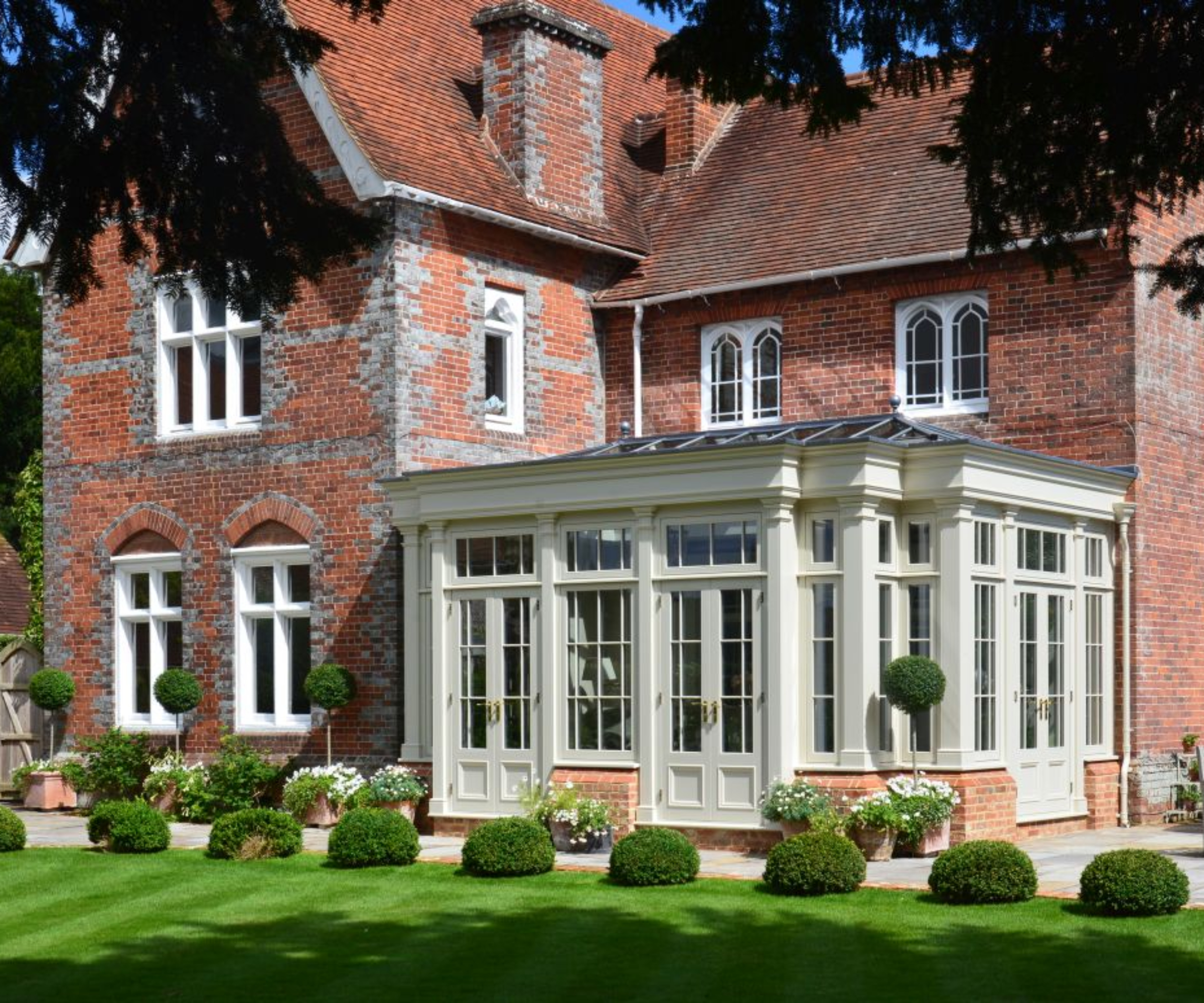
When choosing the perfect location for your orangery, consider how you currently use your outdoor space and try to identify where they are opportunities to add one that done't encroach on your garden design.
While the beauty of an orangery is the connection it provides to the outdoors, you may want to try and retain as much useable garden as you can. If, like the project above, the size and shape of your home means you have a corner section left unfilled, why not consider filling the gap with an orangery idea.
In this instance, you'll probably find a bespoke design is better suited to your space as it can be made to measure. It also means you aren't restricted by any particular measurements.
"There is no strict minimum size for an orangery, if you choose to work with a bespoke designer or manufacturer," confirms Karen Bell.
"Whether you’re looking to add a compact space for relaxing or a large open-plan kitchen extension, the size is entirely flexible. That said, practical considerations like proportions, intended use, available space around the existing house and garden and, of course, planning regulations will influence the final design."
2. Pick a wraparound design with double the doors
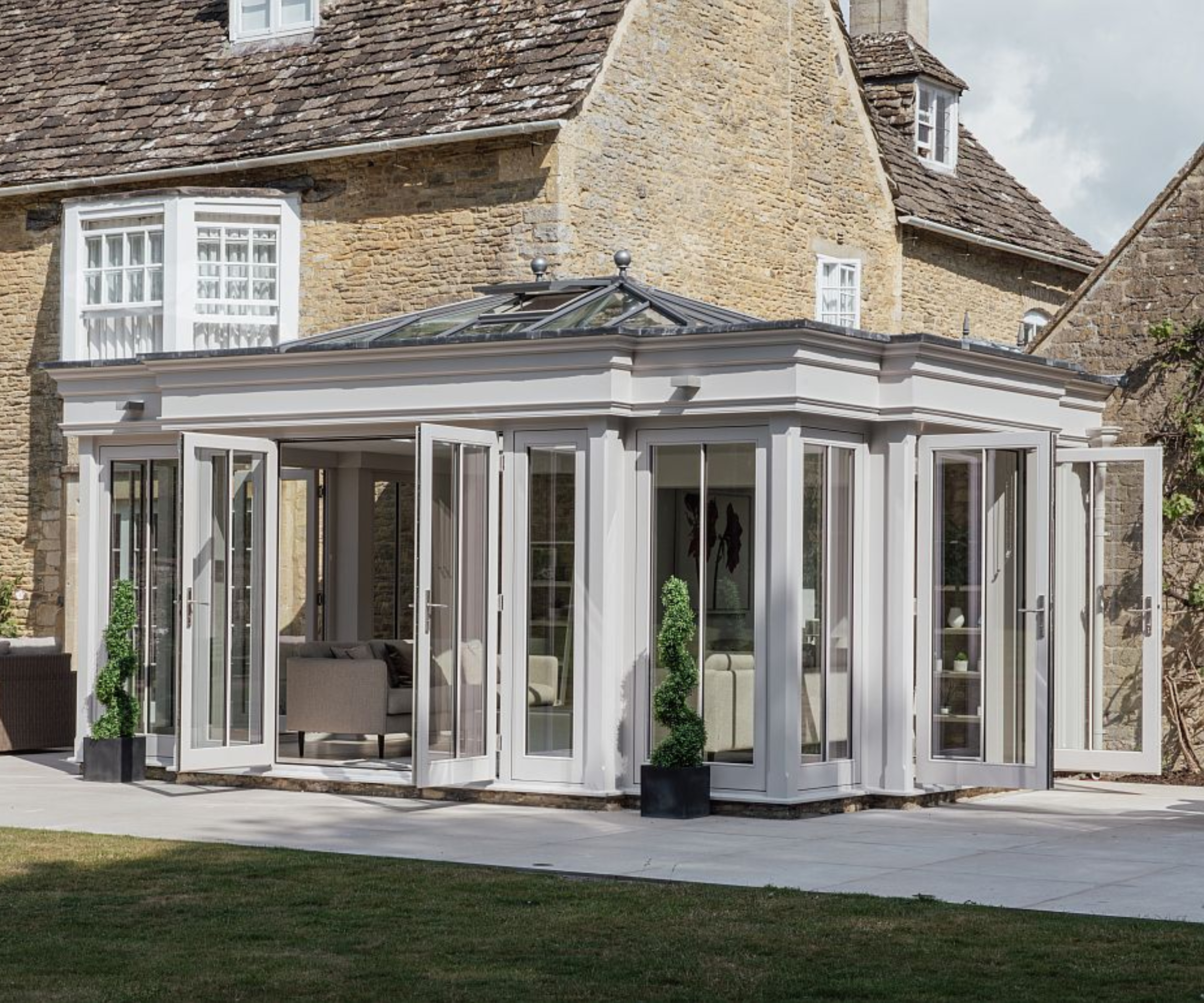
If space permits, a wraparound orangery idea will not only give you plenty of extra indoor living space, but can also increase the connection between inside and out.
How? By maximising on the opportunity to include extra access to the outdoors. This is particularly important if your orangery functions as an intermediary space between the main house and the garden.
For a true indoor-outdoor experience, lean into this by installing two sets of double patio doors, use a matching colour palette inside and out and consider biophillic design ideas – such as indoor plants to help bridge the gap between outside and in.
3. Pick your exterior colour wisely
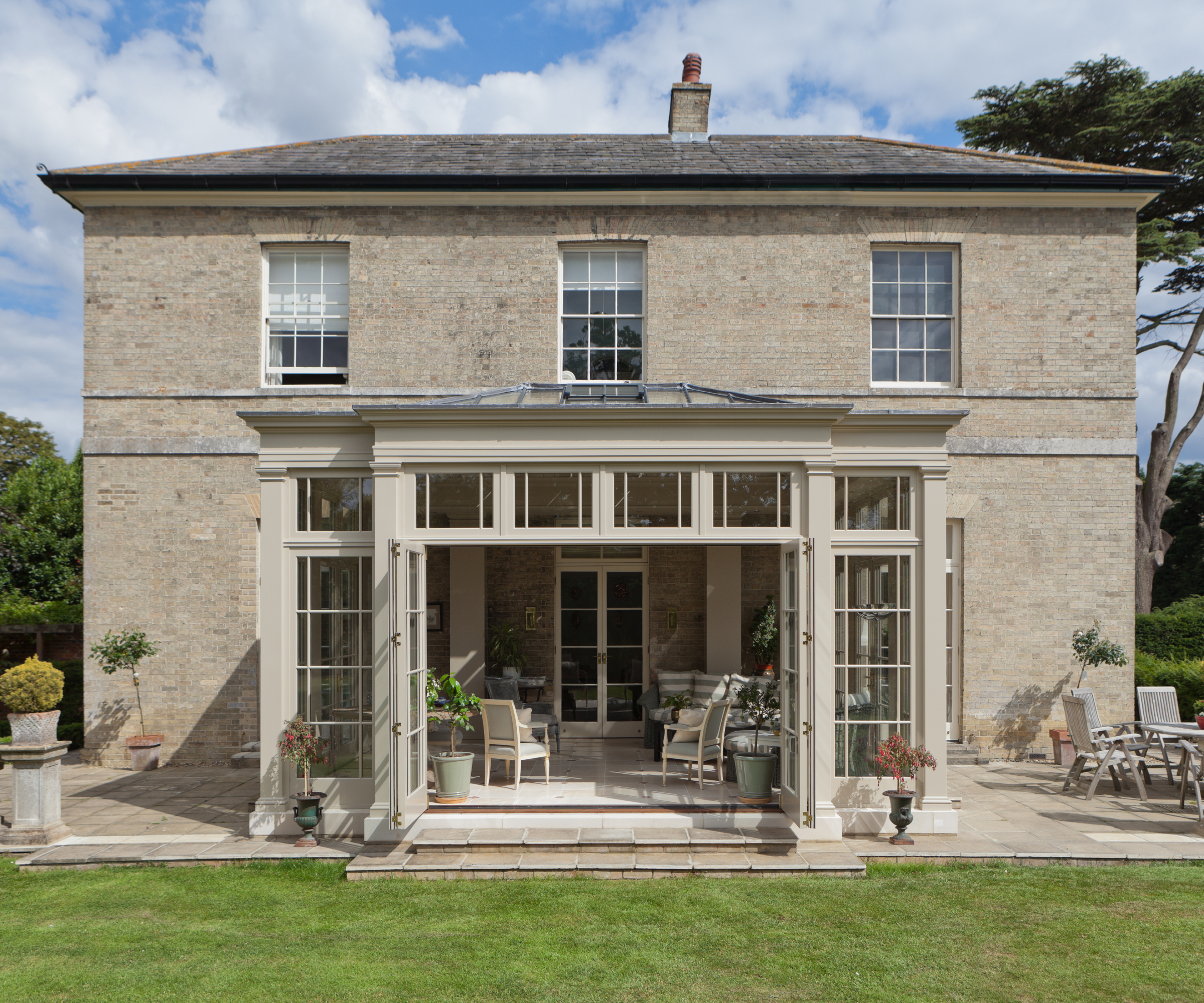
To blend in or to stand out? It's a choice you'll need to take time over when finalising your orangery design. But how do you decide?
"When choosing the exterior colour for your orangery, it’s important to consider the style, age, and materials of your home to ensure a cohesive look," says Karen Bell. "A well-chosen colour will enhance both the orangery and the wider property, blending seamlessly or offering a subtle contrast that complements your surroundings.
"Start by observing the tones in your brickwork, stone, or render. Natural shades like off whites, greys, and greens often work beautifully with period properties, while bolder or contemporary tones can suit modern homes. If your property is listed or in a conservation area, it is important to check for any planning restrictions and consult an experienced designer.
"Neutral colours remain timeless and versatile, but don’t shy away from subtle, heritage-inspired hues that add personality without overwhelming the design," she says.
"Above all, consider how the colour will look year-round, in different lighting, and how it will age over time. Requesting a physical sample or viewing completed projects in similar tones is a great way to make a confident decision," advises Karen.
4. Pair a traditional design with a modern interior
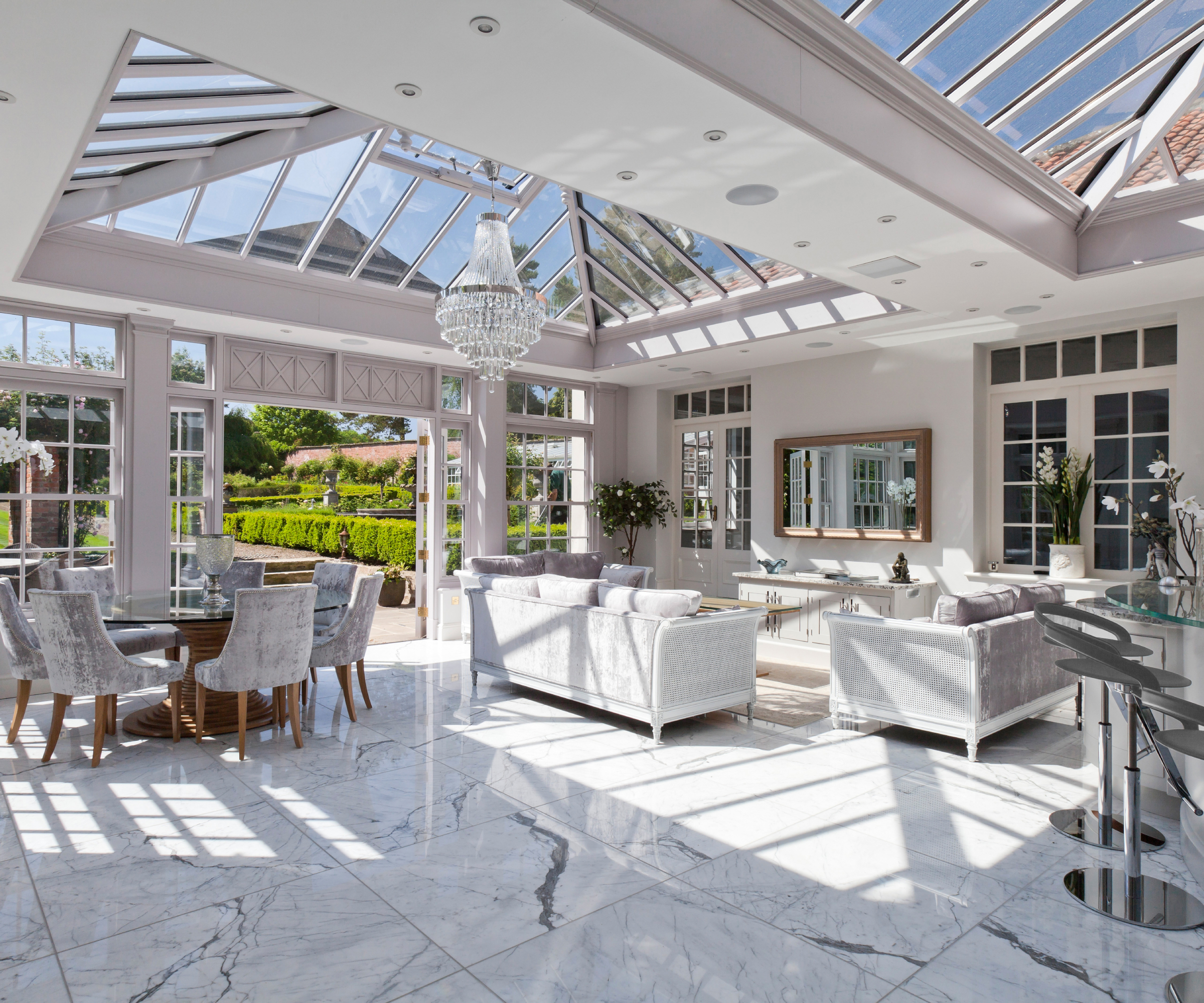
Although an orangery is rooted in historical design, your interior doesn't need to be dated in design.
The owners of this stunning orangery designed by Vale Garden Houses have proved that modern design can work equally as well, choosing to drench this full blown entertaining zone in shades of white and grey.
Glossy marble flooring pairs with glass chandeliers, sleek grey bar stools sit in front of a glass bar counter and the seating and dining areas simply beg to be sat in and enjoyed.
5. Use roof blinds to help control sunlight
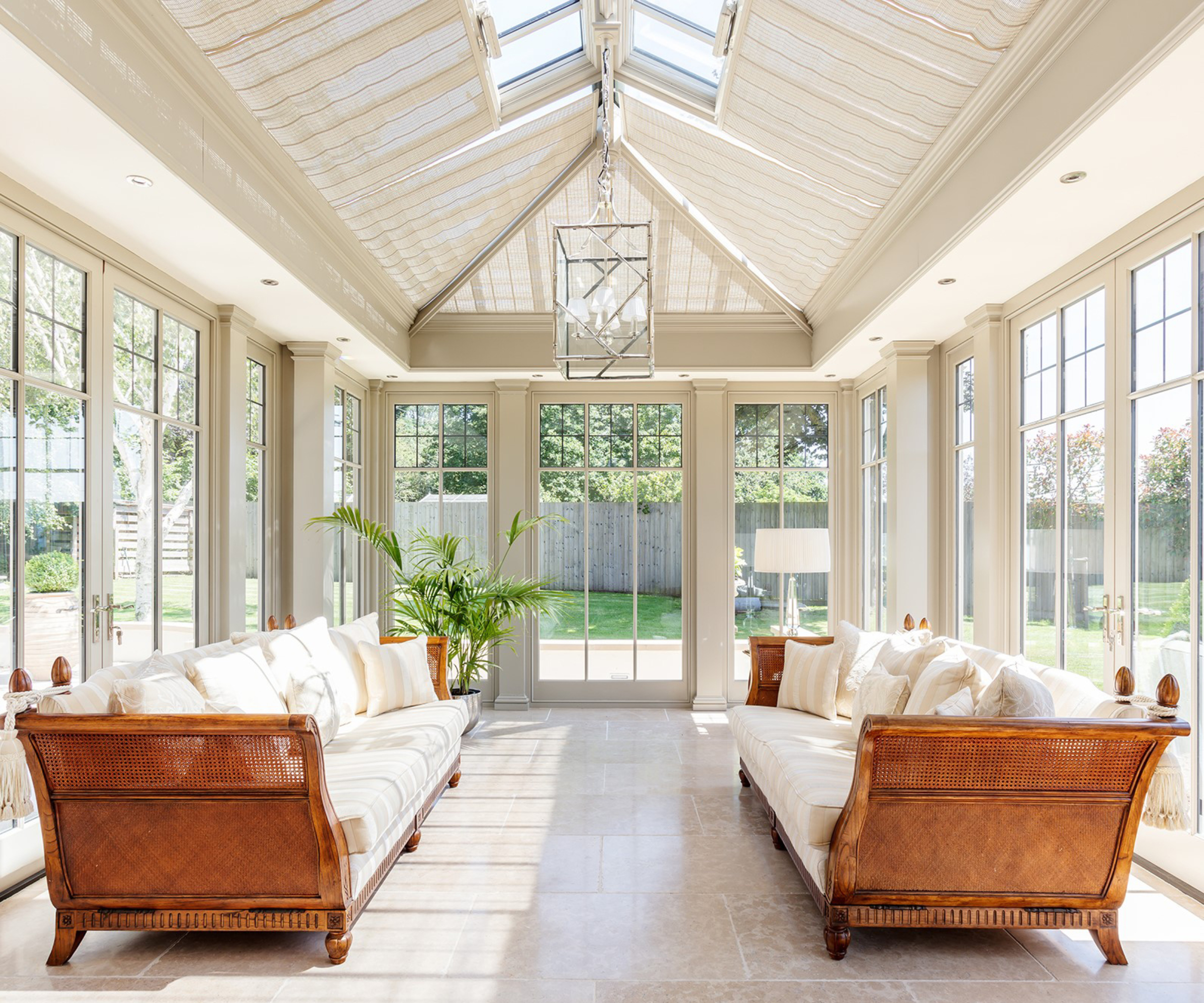
Although the sun-drenched feel of an orangery may be the very reason you are considering orangery ideas, it's important not to forget you may need to add in some additional layers of light control.
For a more sustainable space, consider heating and cooling it using passive techniques in the materials and design. Ventilation, solar control glazing and shading should all be seriously considered before the build begins.
For a low-maintenance and future-proofed orangery, consider installing ventilators that open automatically to let warm air rise and escape, but close when rain is detected.
Conservatory roof blinds on the roof lantern will also be an easy way to ensure the space doesn't get too hot in summer, and will insulate from the cold in winter.
6. Create an open plan kitchen orangery
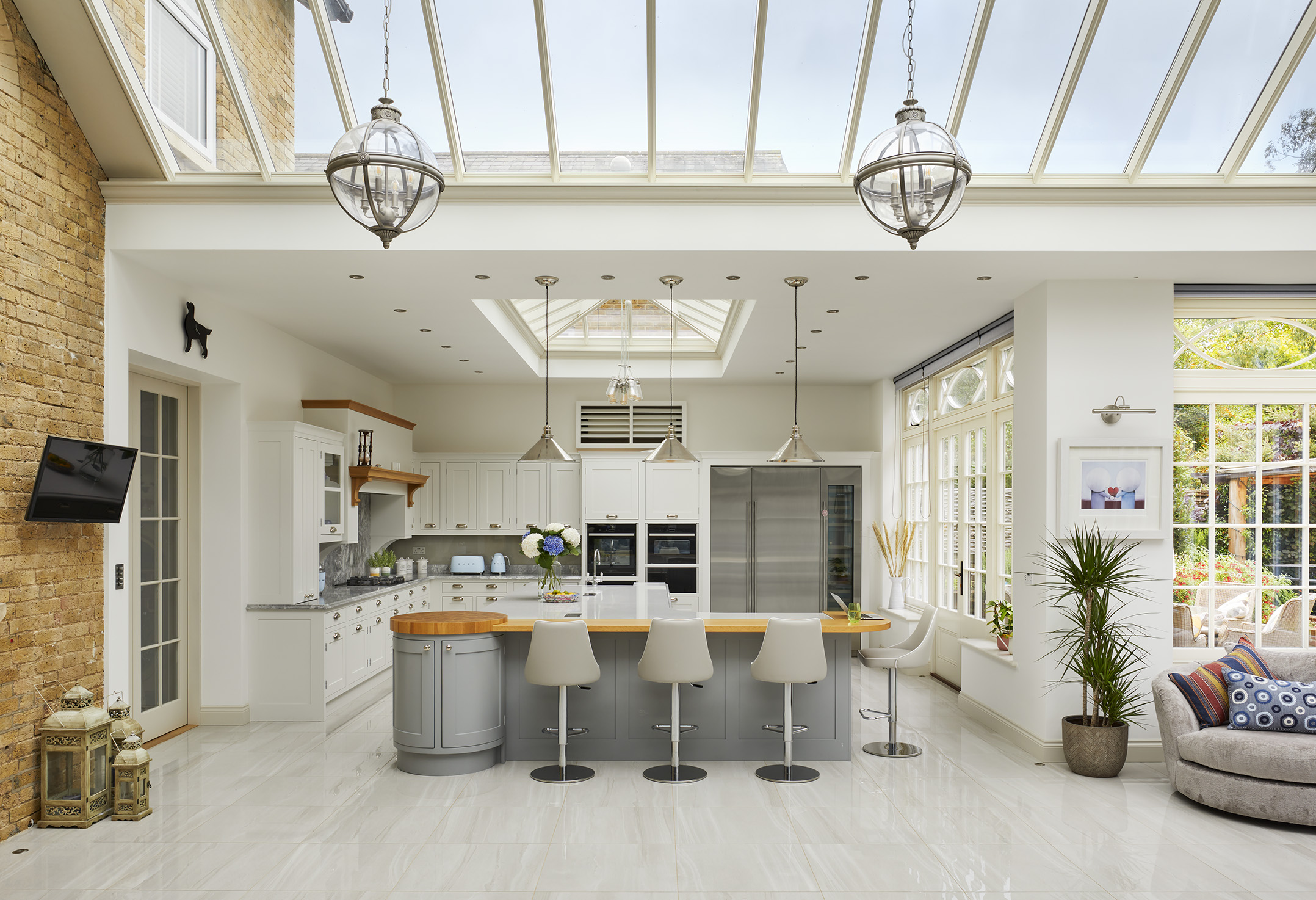
"Some of the recent trends for orangeries are for them to be used as a large open plan spaces to incorporate both a kitchen and dining space in one, often with the added element of a space to sit and relax after dinner," says James Upton, managing director of Westbury Garden Rooms.
Combining a kitchen and an orangery is great option if you're considering replacing a conservatory with an extension as it bring light further into the existing floorplan and provides an opportunity to revive tired interiors.
"We’re also finding the most popular design brief is a light-filled kitchen extension or an open-plan family room, perfect for entertaining," says Karen Bell. "An elegant dining room, seamlessly blending indoor comfort with garden views, is perhaps next in terms of popularity."

James has been with Westbury Garden Rooms for 20 years, working his way up from technician to managing director. He has a vast experience in knowing just how to create a bespoke conservatory that is designed to suit each customer's individual needs.
7. Elevate your orangery with a sweeping staircase entrance

Although orangeries are usually located at ground level, if your grand country property offers a multitude of outdoor space and a variety of living levels, including an orangery on a terrace could be the perfect addition.
The nature of an orangery's appearance is perfectly in keeping with houses of a grander style, or ones that are steeped in tradition. Choose an exterior colour that matches with elements of your home, or, redecorate windows and doors to suit. Either way, it's the perfect way to elevate your design to a whole new level.
8. Dine by daylight or under the stars
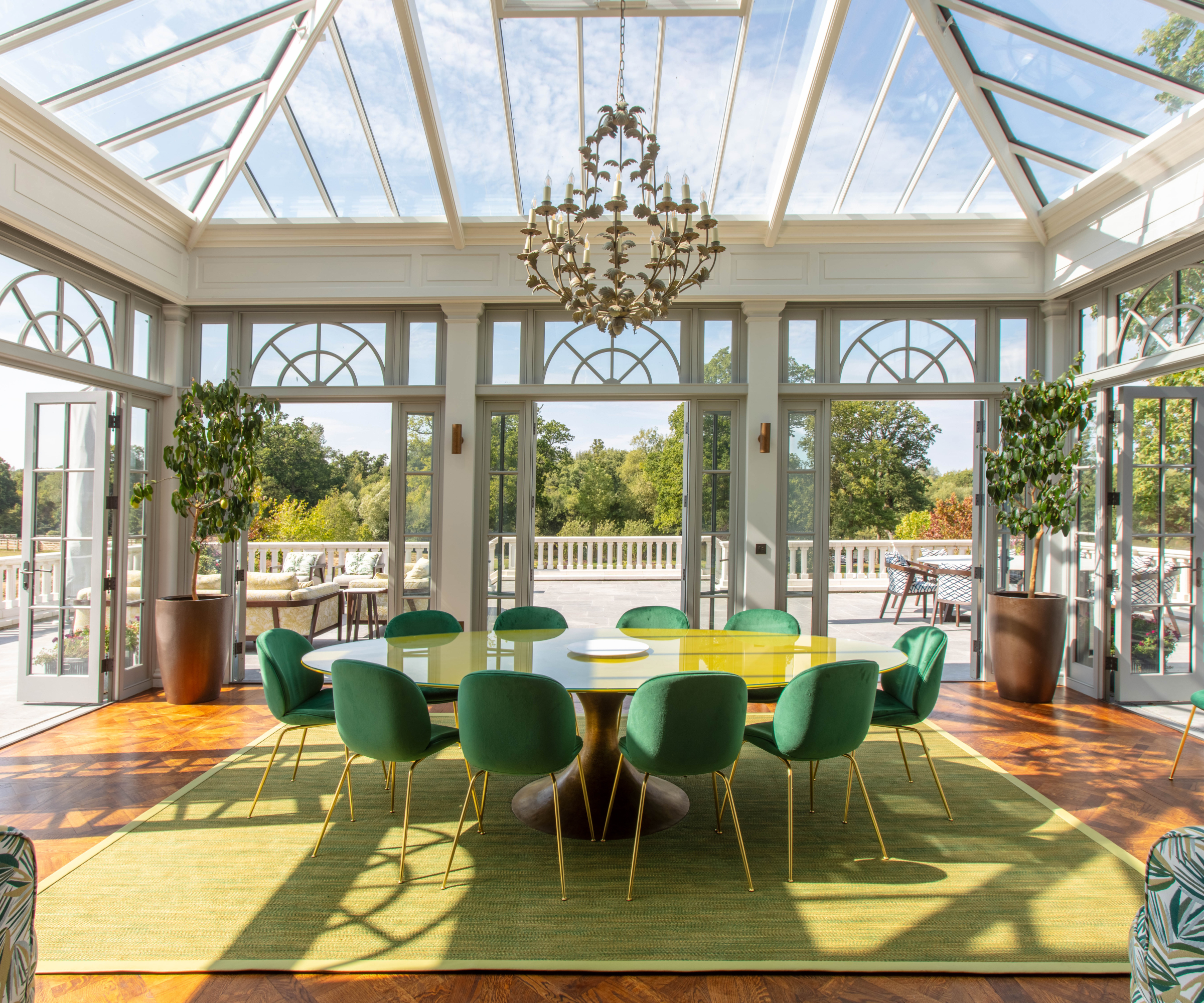
Fed up of eating in the kitchen, or looking to create a new dining space for entertaining? Using your orangery as a dining room can be the perfect way to add an extra level of ambience to your meal times.
Whether it's casual family meals on sunny weekends, bathed in sunlight, or evening entertainment bathed in moonlight and stars your orangery can play host to all manner of gastronomic delights.
The perfect entree? A show stopping chandelier to provide twinkling light too.
9. Position an orangery to suit its purpose
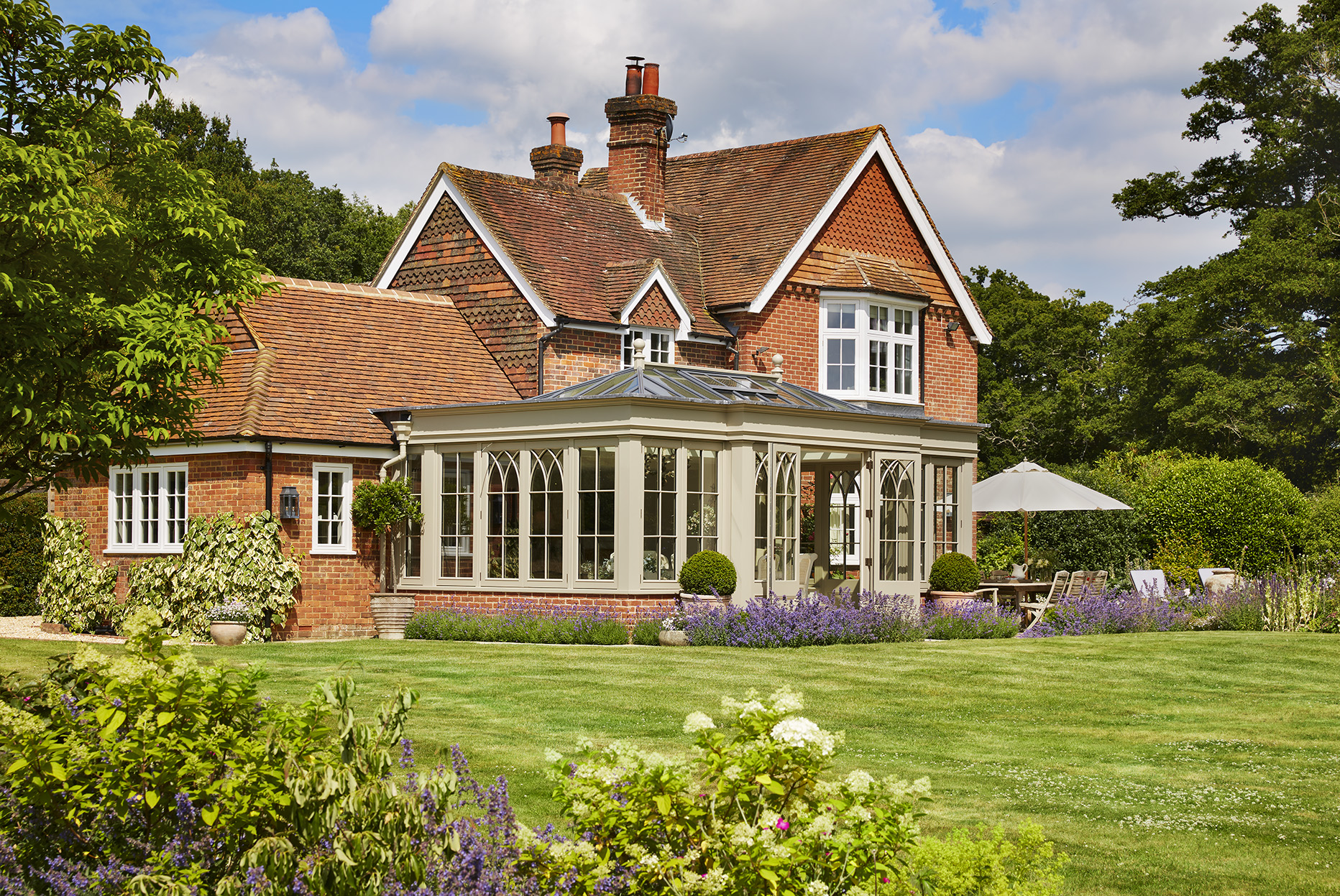
When planning an orangery extension, match the orientation with the intended use.
East-facing rooms will be most beautiful in the morning, so plan a breakfast nook or banquette area in this position. West-facing orangeries make perfect dining and sitting rooms – one that will capture the last of the sun's warmth and light – for later in the afternoon and early evening.
South-east and south-west facing spaces are great for maximising the sun, as long as you take extra measures to avoid overheating and consider these ways of keeping a conservatory cool.
10. Make the most of your glazing options
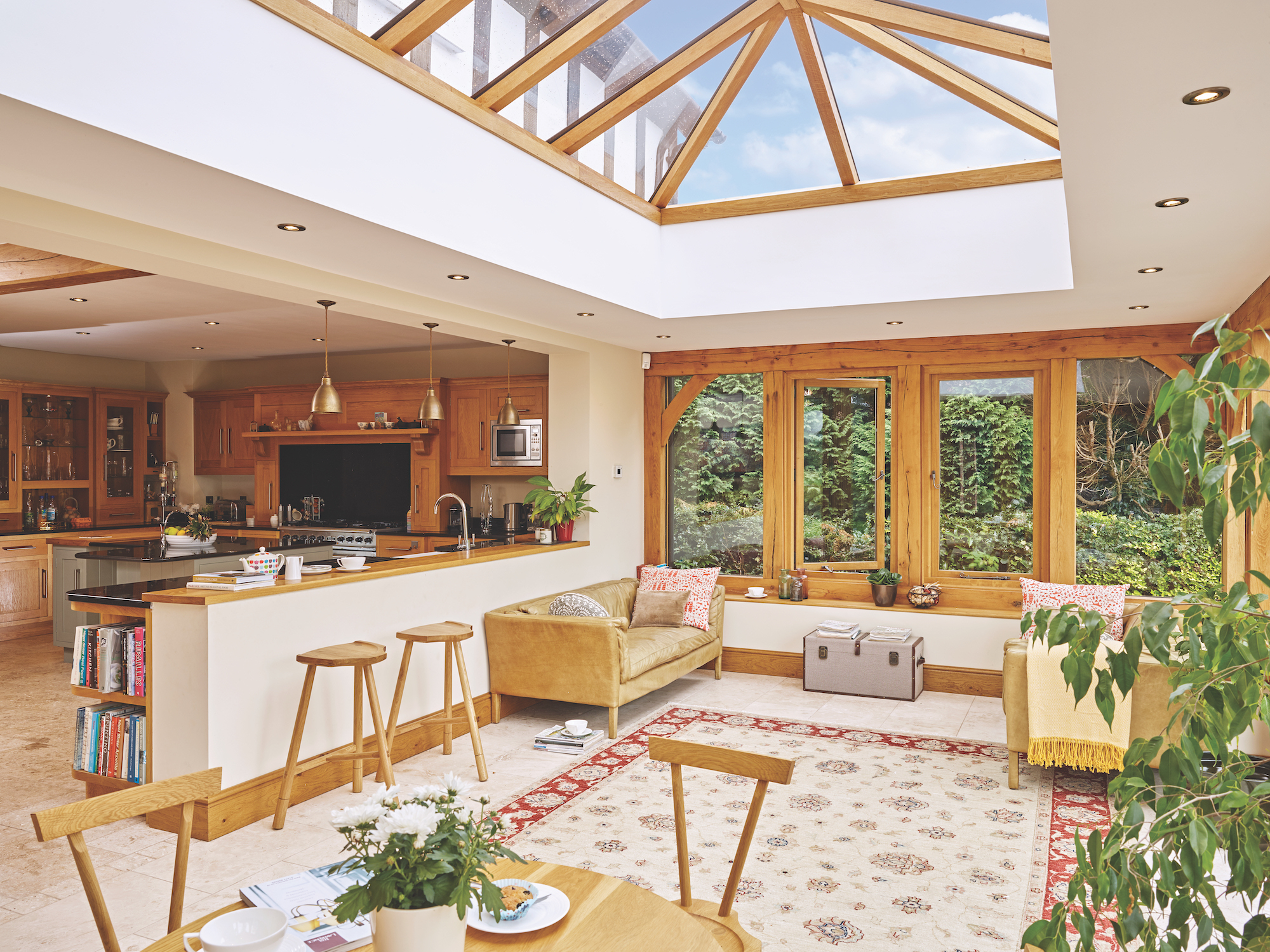
Really set your orangery apart by adding different window styles – from openable casements and fixed picture windows to bifolding doors and roof lanterns.
Choosing the right glazing will transform an orangery and make it more usable for each living space function. Plus, if you're weighing up the benefits between an orangery extension or conservatory, being able to personalise a bespoke space in this way should certainly be part of the decision-making.
Here, oak framed fixed and casement windows work together to ensure the open-plan living room and kitchen balance one another, while the large roof lantern brings natural light deeper into the floorplan.
11. Or, create a more solid feel with less windows and doors
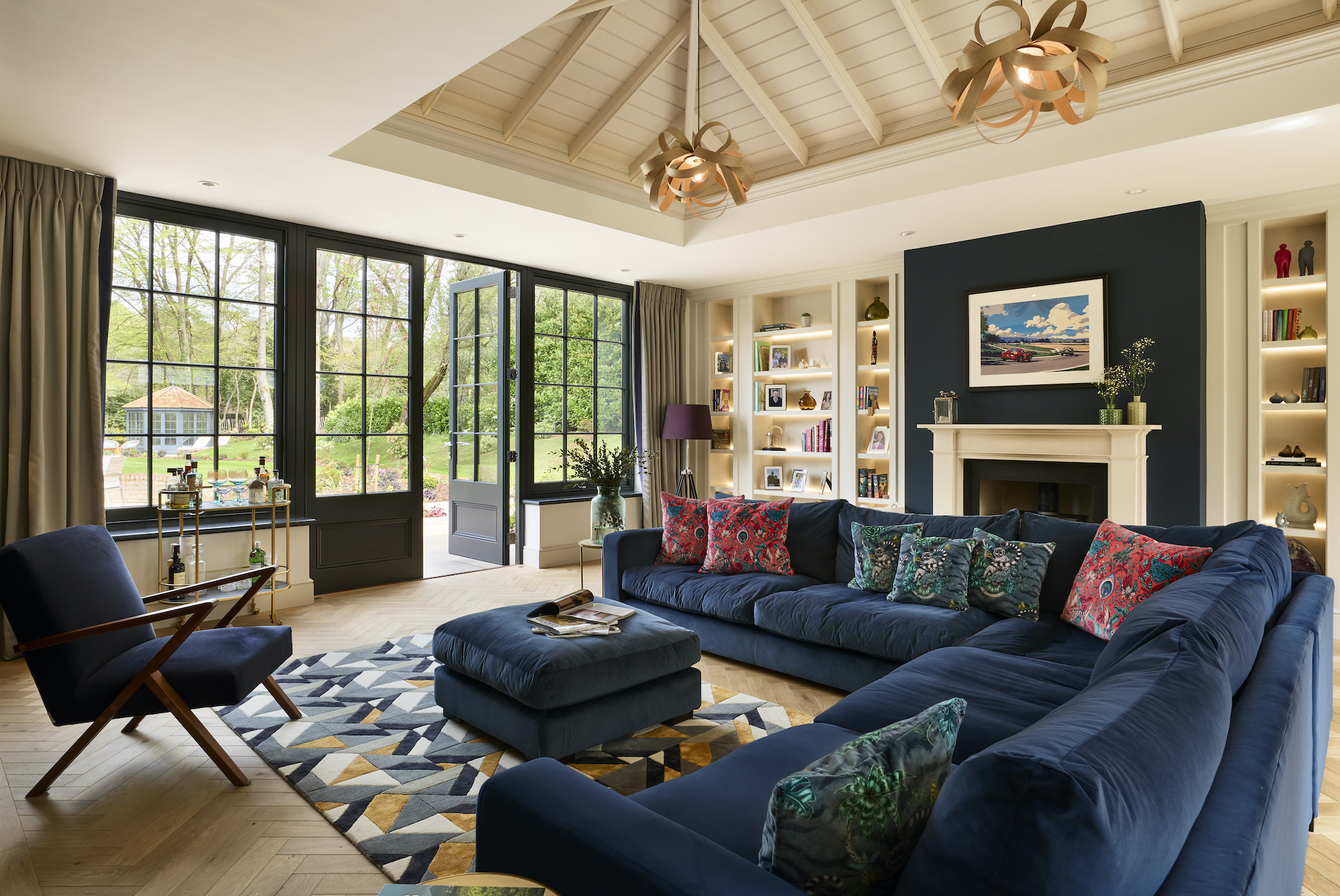
If your orangery idea is to serve the purpose of providing an extra living or reception room, you may find opting for a more solid approach to some of your walls is more beneficial.
Giving you a cosier and more permanent feel, it can also allow you to opt for darker furnishings and finishes that won't be affected by sunlight. Wooden conservatory roof blinds will also create a more closed in feel to the ceiling and make TV viewing easier too.
12. Choose versatile flooring when outdoor meets indoors
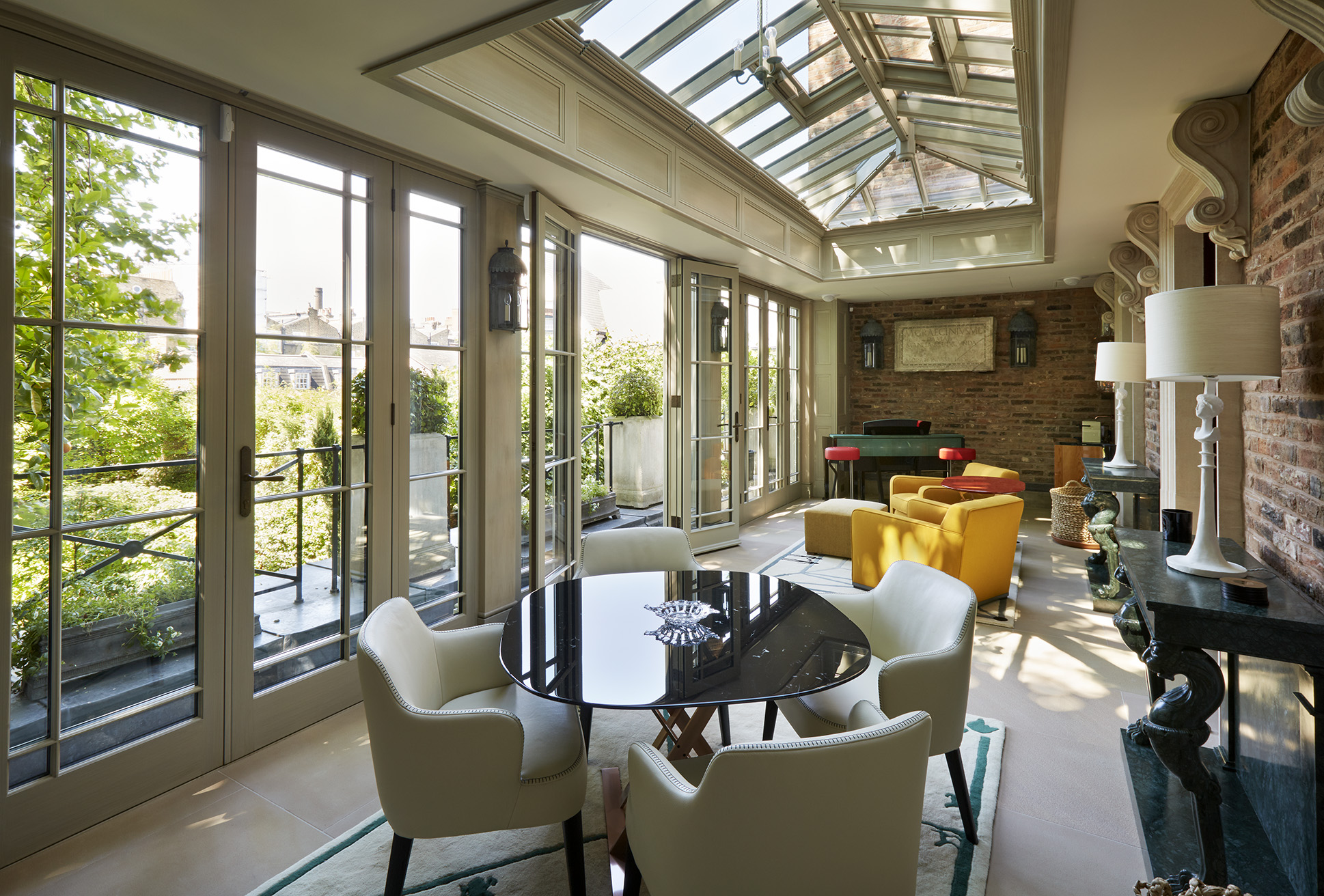
The materials you include in your orangery shouldn't just work for your interior design, but also enhance the lifestyle you're looking to achieve in this space.
As with conservatory flooring ideas, stone, tile and polished concrete are great options as they will retain heat from the sunshine and release it as the temperature drops at night – creating a cheap and energy-efficient way of heating an orangery. Plus, using a mechanical ventilation with heat recovery system means this heat can also be distributed around the house.
A light stone floor and exposed brick walls in this orangery mean that the heat absorbed throughout the day will also be utilised.
13. Orangery ideas work on bungalows too
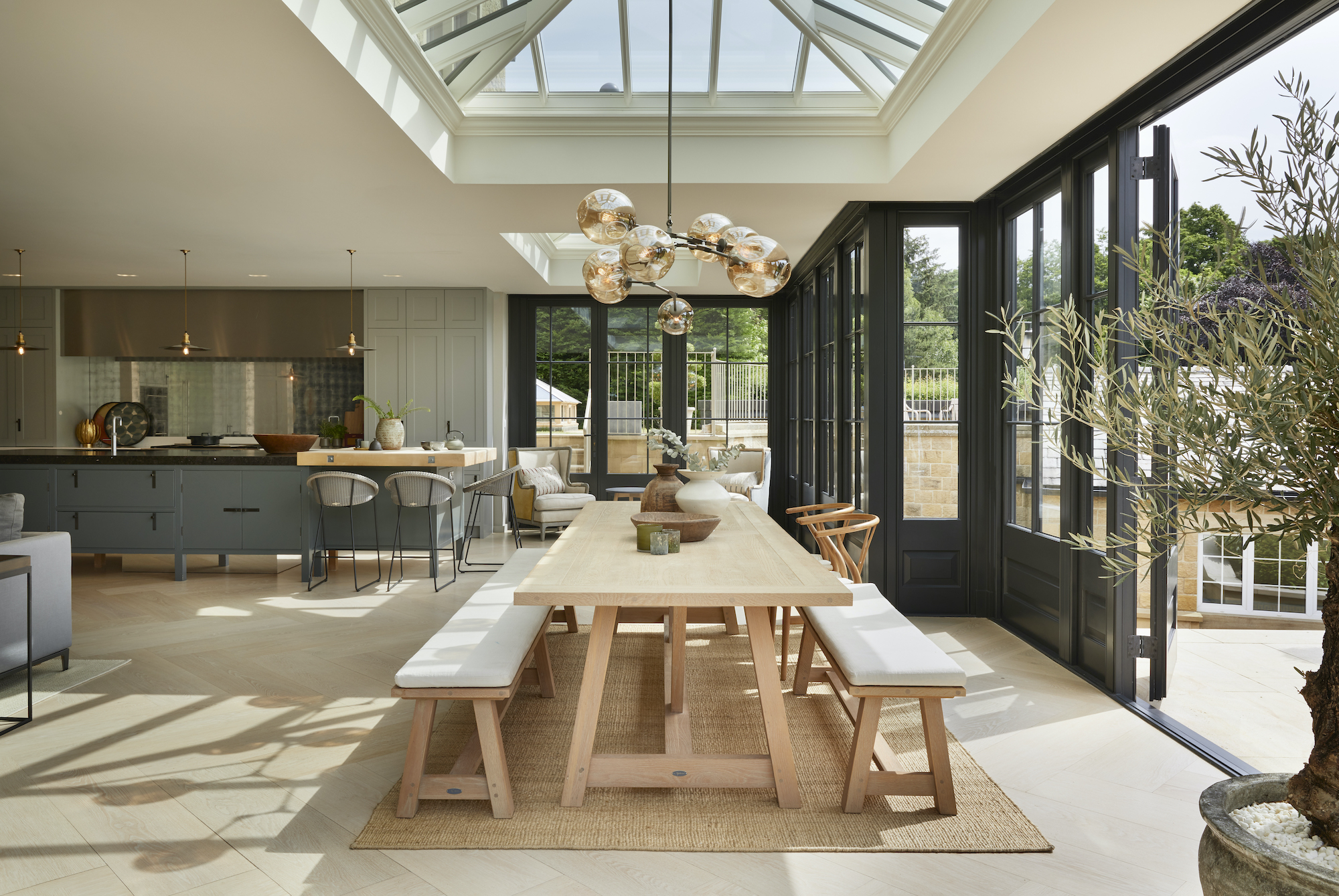
Use an orangery-inspired extension to reorientate a dark or warren-like layout of an existing home, usually seen in bungalows.
An integrated, sunny addition – be it a live/work space or to a kitchen-diner – is an opportunity to reorganise a floorplan and let natural light further into an existing property.
This stunning orangery from Westbury Garden Rooms creates a modern open-plan living area we all crave along the back of the house.
14. Don't forget the need for artificial lighting
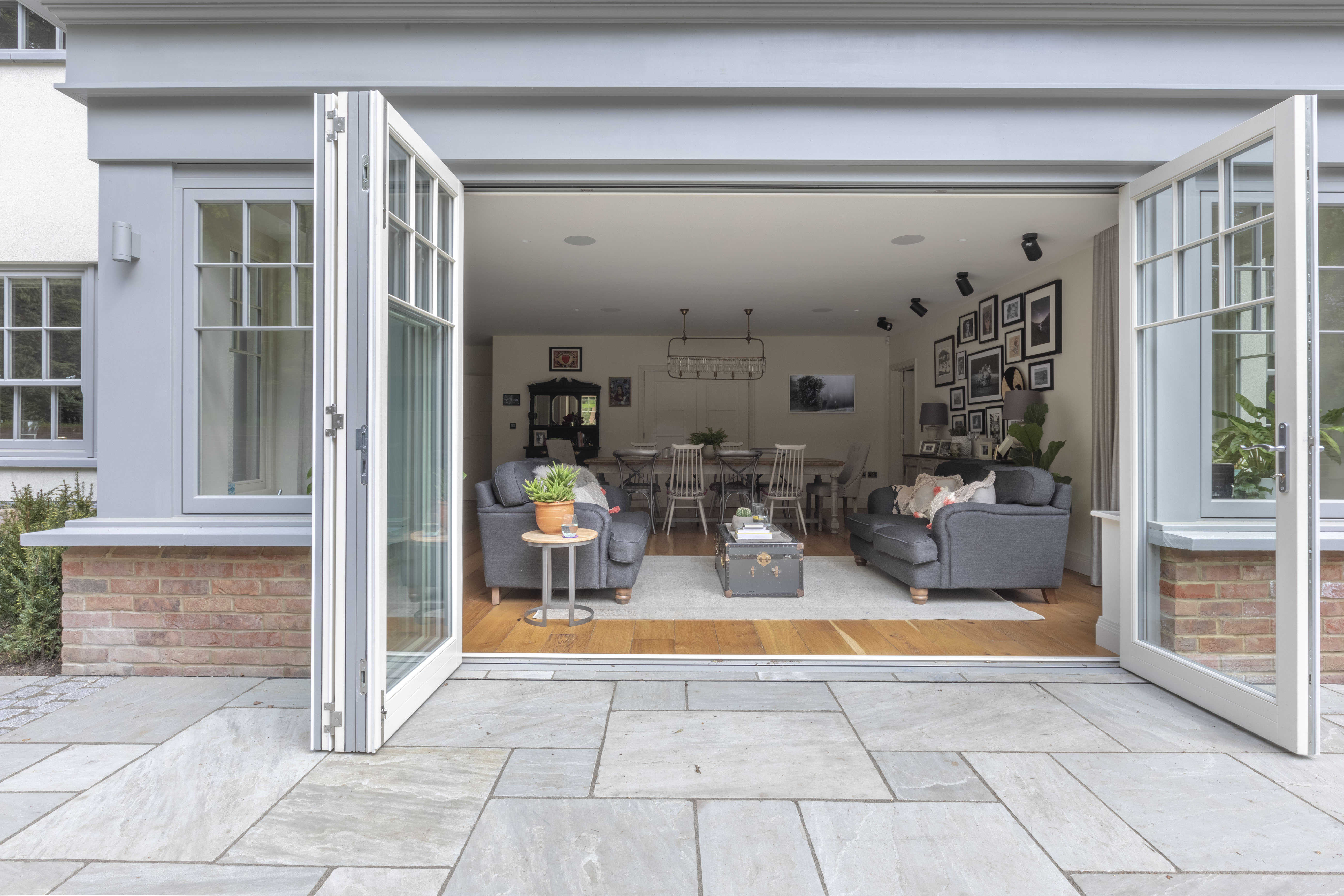
While we would all like to think that an orangery will be drenched in sun at all times of the day, that just isn't the case, especially in the changeable British summertime. Therefore, creating lighting that can adapt to the light levels of the room to maintain functionality is essential.
Plan this at the design stage with your electrician and orangery supplier – if you leave it until the first fix, some options might not be open to you without a higher cost.
To help with differing light levels during the day and night, a smart lighting scheme can be a good option for an orangery, allowing you to set different 'moods', controlled by separate switches to work for different times of the day.
15. Invest in the right furniture for your orangery ideas
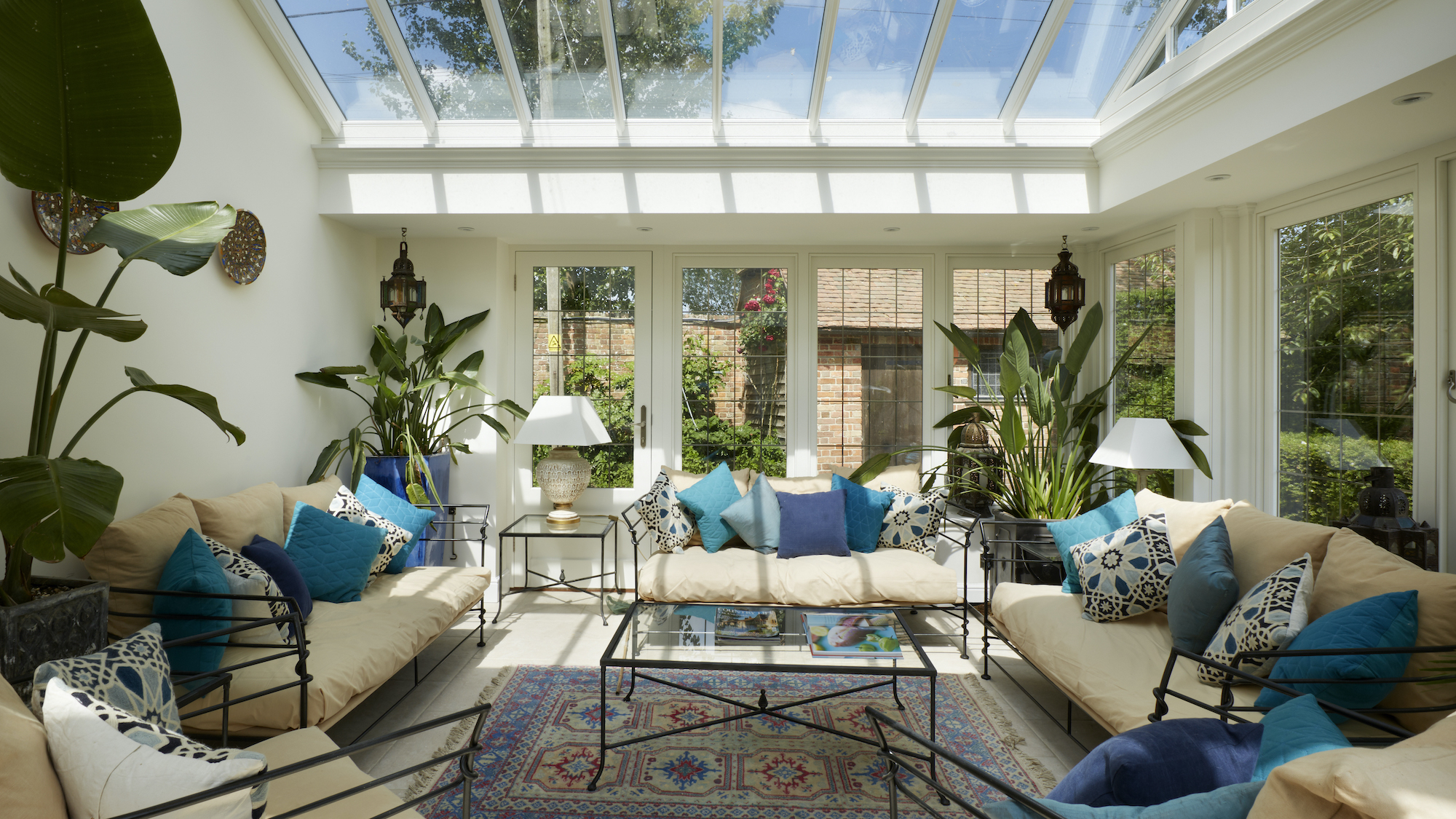
Despite the high levels of UV, orangeries typically aren't blessed with the cream-of-the-crop when it comes to furniture. We've all been in a sweaty orangery or conservatory at some point and been cemented to a wicker/rattan chair – probably not the look anyone is going after with a modern addition.
Steer away from garden furniture and include items that you would place in internal living areas for a more inviting space.
"Far from the tired conservatories of times gone by with rattan or garden furniture, we now find that many customers hire interior designers to dress their modern space with bespoke furniture pieces and soft furnishings to give their orangery the ‘wow factor’," says James Upton.
16. Use small glass box extension as design inspiration
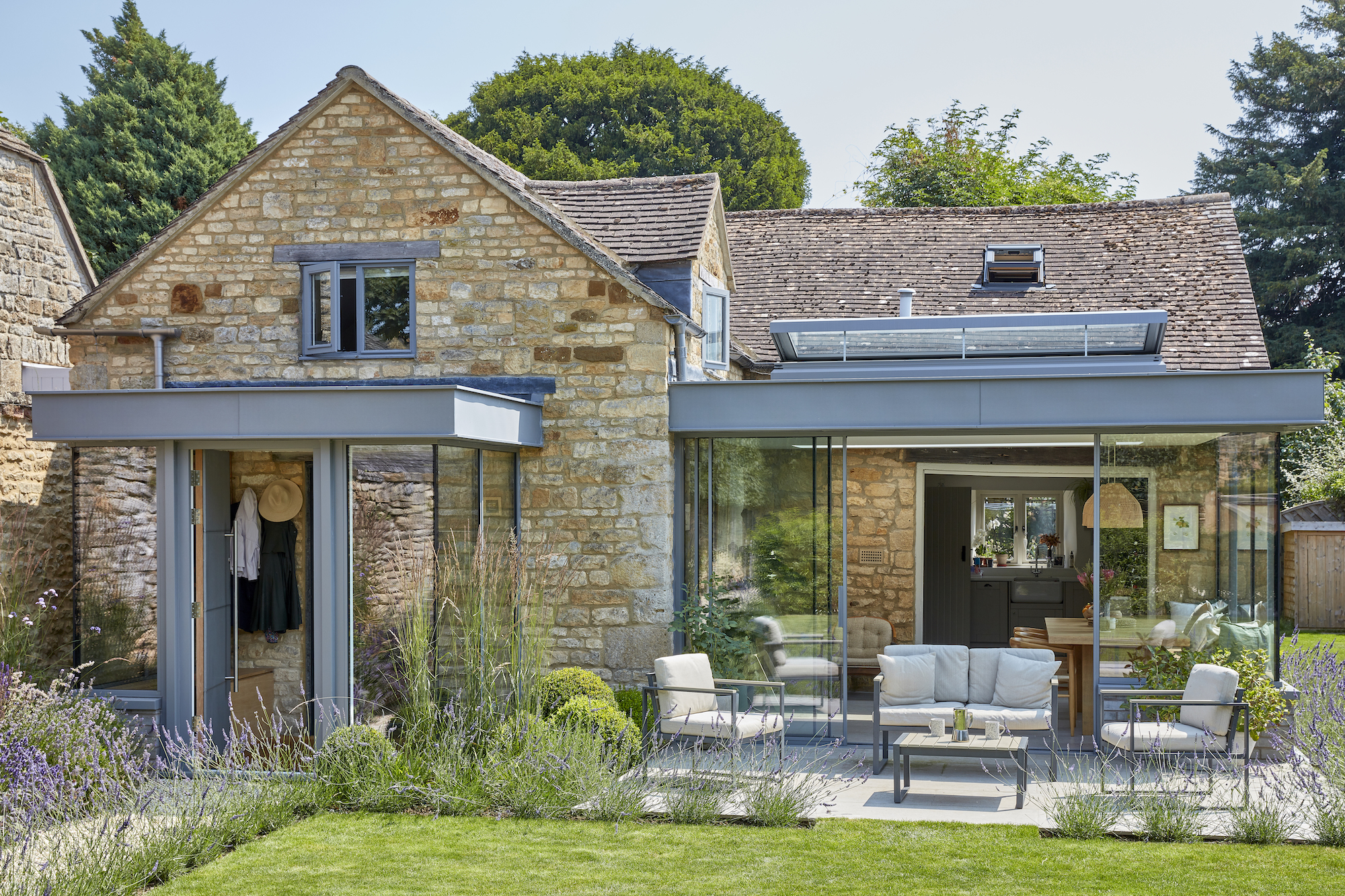
While orangeries, sunrooms and conservatory ideas are different from each other in a technical sense, they do all share basic principals of being glazed extensions.
Don't limit yourself and explore the different garden rooms and inspiration might spark. The best way to garner tips on how to design a space, or ideas to apply to your own project, is to look at all kinds of glass box extension ideas.
This super-contemporary addition to a Cotswold's cottage features the glazed walls of a conservatory, the solid roof of a sunroom and an automatic roof light to function akin to an orangery roof lantern. The result is undeniably effective and have provided the young family with a gathering place that was previously missing from their home.
17. Be bold with your paint choices
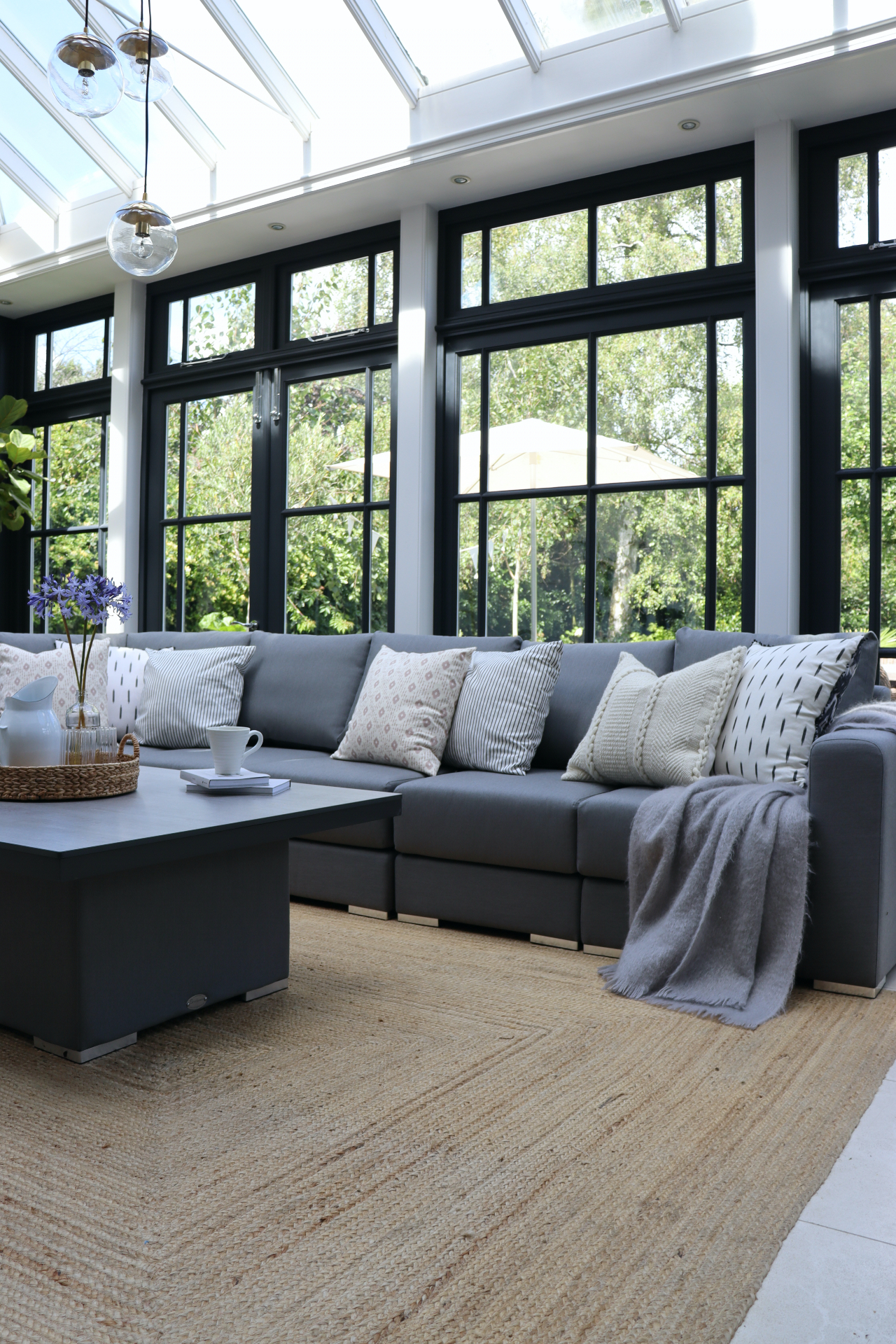
"We are finding that due to the durability of the paint we use, more and more customers are opting for darker coloured joinery for the external of their orangery," James Upton comments.
"Previously darker colours would have been steered away from due to the paint cracking, which is why so many orangeries are light colours such as creams and whites.
"However, with the enhancements of Teknos microporous paint as well as the stability of Accoya wood, customers can now opt for these modern dark shades, as the wood does not swell or move and the paint does not crack or warp."
18. Consider a stand-alone orangery idea
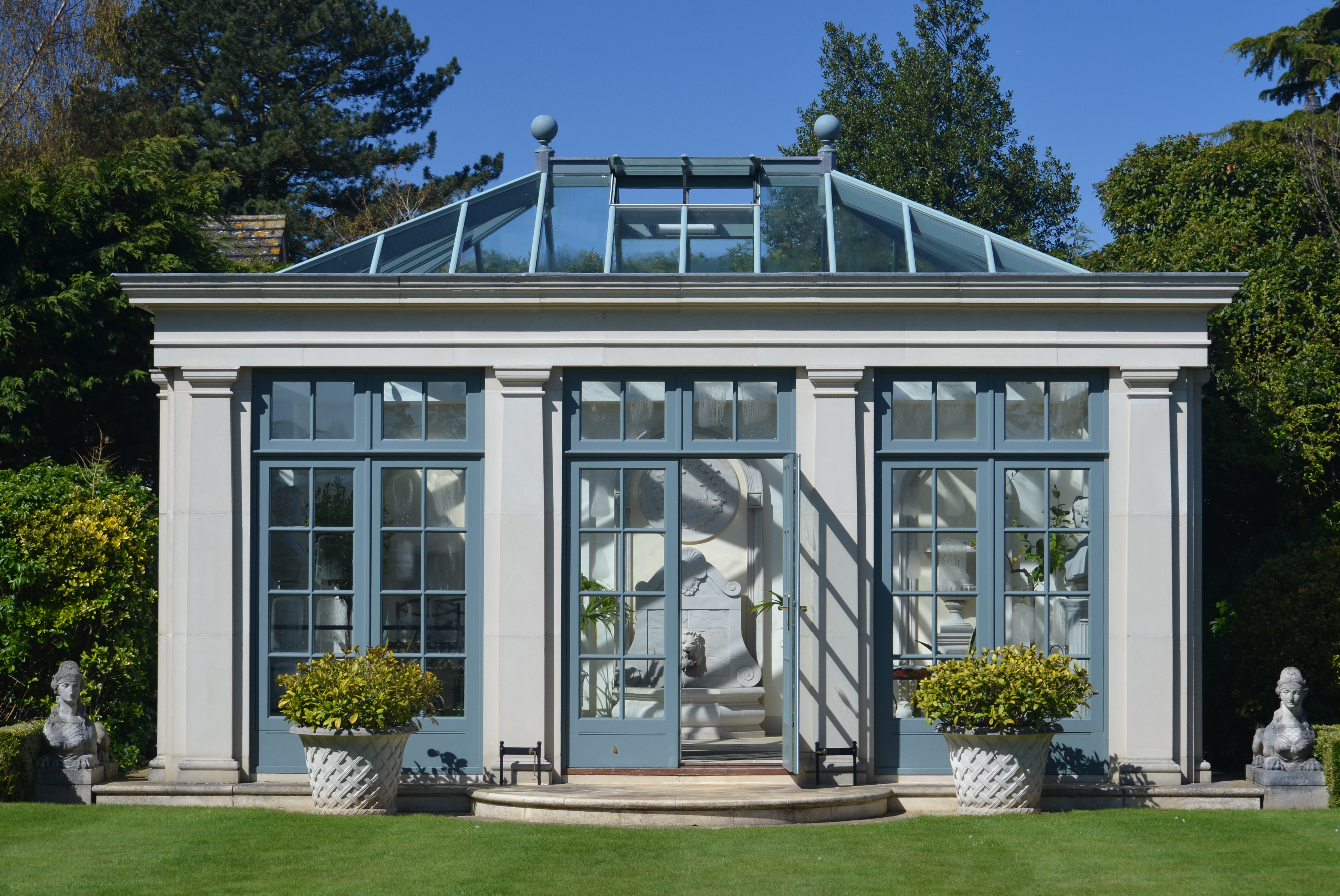
If you have the space, utilise an orangery for their original purpose – growing citrus, exotic or tropical plants – and create a unique, solitary orangery in the garden.
Not only can this be used as a more-permanent, and visually-appealing, alternative to a greenhouse, but if you don't have particularly green fingers, the space could also provide various functions as well – such as a garden office or an extra living space for multi-generational families.
FAQs
What will affect my orangery cost?
Orangery costs will be dependent on a number of different factors.
"So much depends on what type of orangery you are looking for, what size, whether you require something bespoke and perhaps the biggest factor of all, what materials you want it made from," says James Upton.
The size and types of windows or roof lanterns will impact costs. uPVC is naturally going to be cheaper an aluminium or timber options, but definitely lacks charm or durability by comparison.
What are the planning rules for orangeries?
Orangeries are generally treated by planning departments as small extensions, so the same rules in Permitted Development and planning permission will apply.
A major drawback with orangeries can be that these rules only apply to extensions built in the same or a similar material to the original house. A large part of the charm or orangeries is the timber construction and delicate detailing, so you may want to bear this is mind before making any changes.
Keen to move forwards with your orangery ideas? Having a brief for a supplier or designer will help accomplish exactly what you need from the space, be it a sunny kitchen extension, or a place of solitude for reading and relaxing. The benefits of an orangery vs conservatory are in their more permanent structure, so you don't want to rush in and regret decisions later on.
Consider where you spend the most time in your existing home, or what is missing from its current layout. Also, think long and hard about the levels of disruption you're willing to put up with and for how long.
Knocking down internal and external walls for an orangery will be invasive, while positioning one adjacent to an existing door or opening will be, to a degree, simpler.
The purpose of the room will also have an impact on the orangery cost, so having a clear view from the outset will help to minimise any surprises later down the line.

Sarah is Homebuilding & Renovating’s Assistant Editor and joined the team in 2024. An established homes and interiors writer, Sarah has renovated and extended a number of properties, including a listing building and renovation project that featured on Grand Designs. Although she said she would never buy a listed property again, she has recently purchased a Grade II listed apartment. As it had already been professionally renovated, she has instead set her sights on tackling some changes to improve the building’s energy efficiency, as well as adding some personal touches to the interior.
